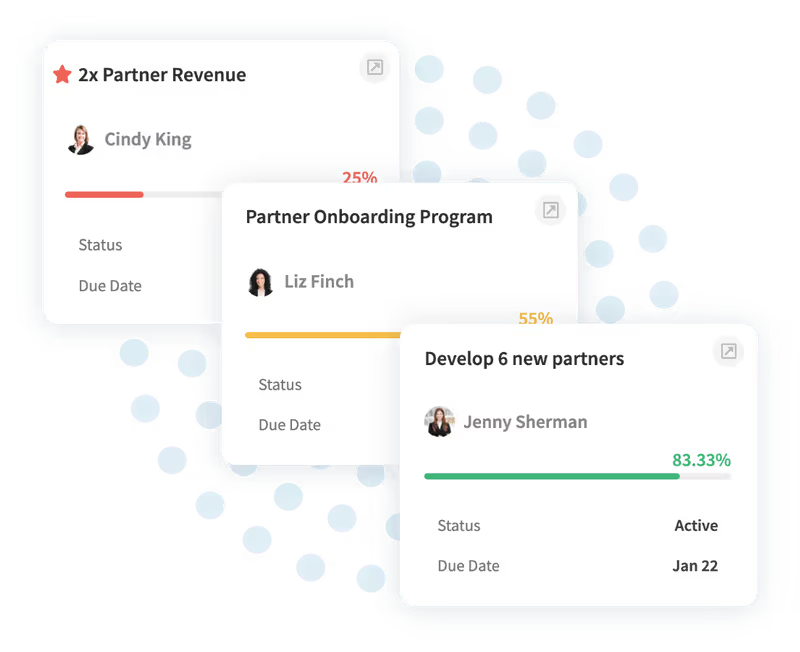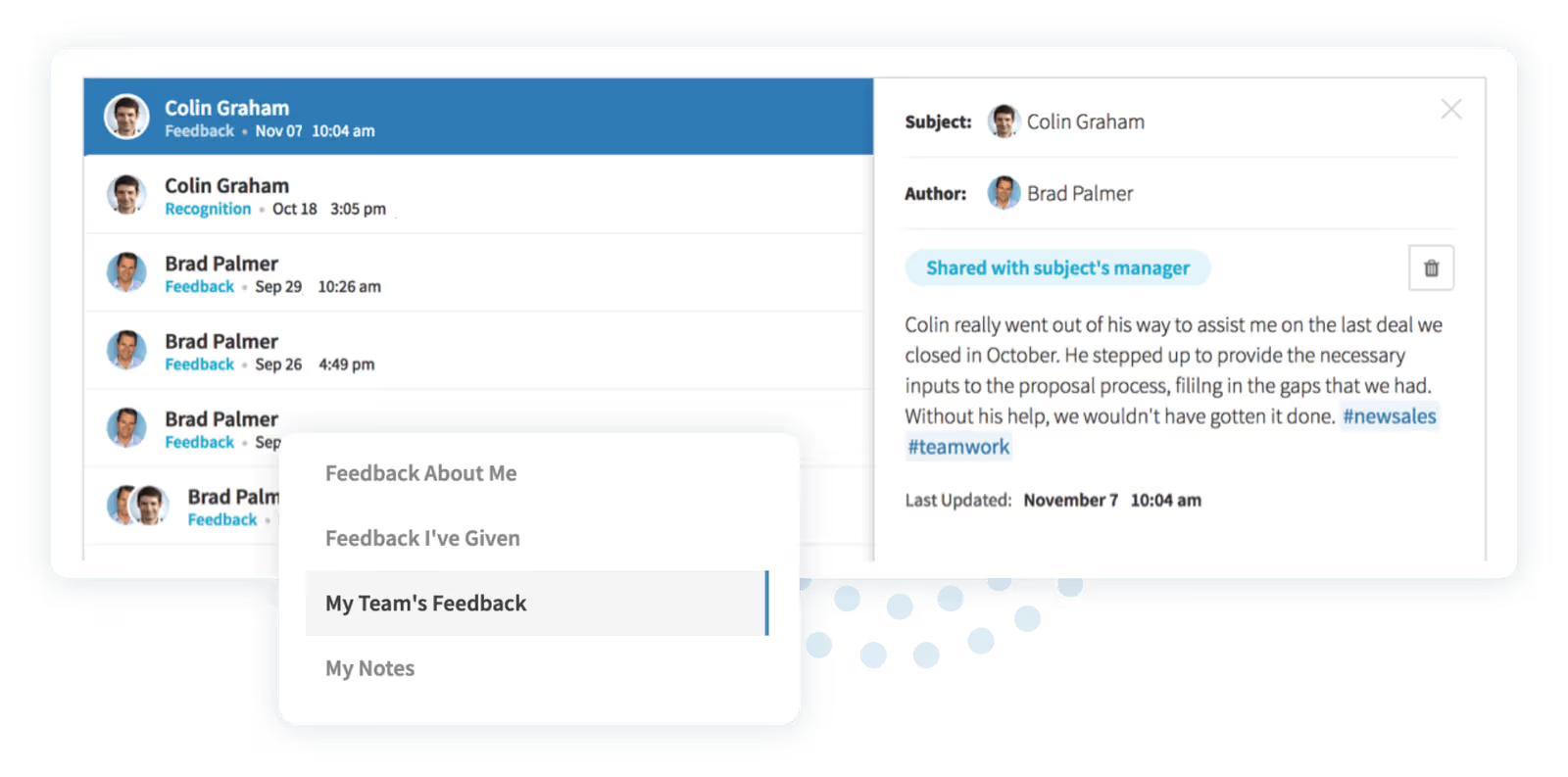The Ultimate HR Guide to Collaborative Performance Management
According to IDC, enterprises with collaborative work environments will see the following in 2025:
- 30% lower staff turnover
- 30% higher productivity
- 30% higher revenue per employee than their peers
It seems like a no-brainer that collaborative workplaces perform better, right? Well, let’s face it: effective collaboration isn’t always a reality. That’s a problem when it comes to performance reviews.
Think about how many communication channels you use. Consider all the different teams your employee works with. All these variables make it hard to get the most up-to-date data on your employee. It’s hard to assess how well an employee works when you have a constant flow of information.
A single review form is a rather one-dimensional way to capture the full spectrum of an employee’s performance. Let’s try something different. Try taking a page out of Google’s or Netflix’s book and implementing collaborative performance management. We’ll show you how.
3 Common Hurdles In the Way of Collaborative Performance Management
Most companies don't built collaboration into their performance management process. If you're one of those companies, you likely have to overcome a few hurdles before you can build a more inclusive performance review system.
1. Individual KPIs that aren’t connected to company/team goals
Even if you’re good at tracking individual goals and performance, you won’t get any sense of how well teams work together. This issue can arise when each individual is tracking their goals in a separate document or spreadsheet. It also happens when managers don’t connect to talk about team and company goals before determining individual goals.
Instead, try cascading goals. This can be done with software like PerformYard, which allows you to tie organizational goals to individual goals. You'll be able to see how the whole team is connected.

2. Cumbersome performance management processes controlled by HR
Some organizations silo their performance management process. That happens when the process runs on individuals filling out single review forms and emailing them back to HR. You’ve got to make it easy for employees and managers to use the performance management process. If not, you’ll get low engagement and few chances for collaboration.
HR often bears full responsibility for performance management. That’s why many HR departments end up creating a system that works well for them. That system may not work well for managers and employees.
Modern performance management systems should be designed in collaboration with managers and employees. Those are the people who will be putting data into the system the most.
3. Top-Down Approach to Performance Reviews
A top-down approach to performance review means direct reports are judged individually. Managers don’t get any feedback on their managerial skills and thus never hear from peers about how to improve.
Consider introducing upward reviews. These are chances for direct reports to review managers. These types of reviews bring more collaboration into the performance review process.
3 Action Steps to Create a Collaborative Performance Management System
Here are our recommendations for progressive performance management at your organization. These steps reflect a dynamic process that’s all-encompassing. They’ll help you keep a clear view of goal progression at all times.
1. Use a centralized platform for performance management
Performance management software brings every employee into one platform. From there, it’s easy for everyone to participate in the performance review process.
The software doesn’t have to give you a prescriptive approach to performance management either. The best software is flexible. It ensures HR people and managers can build collaborative performance management process.
Having a centralized software platform also makes it easy to use additional touchpoints such as:
- Upward reviews
- 360-peer reviews
- Continuous feedback
You can do all these things without asking for a massive lift from HR. The software automates everything.

2. Introduce cascading goals and team goals
Let’s just talk about the benefits of cascading organizational goals into team goals into employee goals. This way, HR people can introduce more collaboration into plans and align their organization around common goals. Managers will still be able to measure individual goal progress.
3. Implement continuous feedback between peers
Continuous feedback is a system used by many companies to build a culture of feedback. It requires having a centralized place where employees can drop casual feedback. Employees should be able to say if this feedback is public or private.
Building this culture starts with a software platform like PerformYard. You’ll need a tool that facilitates, stores, and displays feedback. Then, you need to make sure employees know that they should feel empowered to leave feedback.

Examples of Companies with Collaborative Performance Management
Here are some examples of companies that created collaborative performance management strategies. Check out Google’s “People Operations Practice” or GE’s “PD@GE” app. Use these examples as inspiration when you’re rethinking performance management at your company.



.jpg)

